This is a Pentax Sv 35mm SLR film camera made by the Asahi Optical Company, based in Tokyo, Japan. The significant feature of the Sv is it’s inclusion of a self-timer which was not available on earlier models. It was one the last models of the Pentax S-series and was a very popular camera worldwide selling nearly half a million copies in it’s 7 year run. Although this camera lacks any sort of electronics or light meter, it’s extreme durability, compact size, and excellent control layout still make it a capable and popular shooter today.
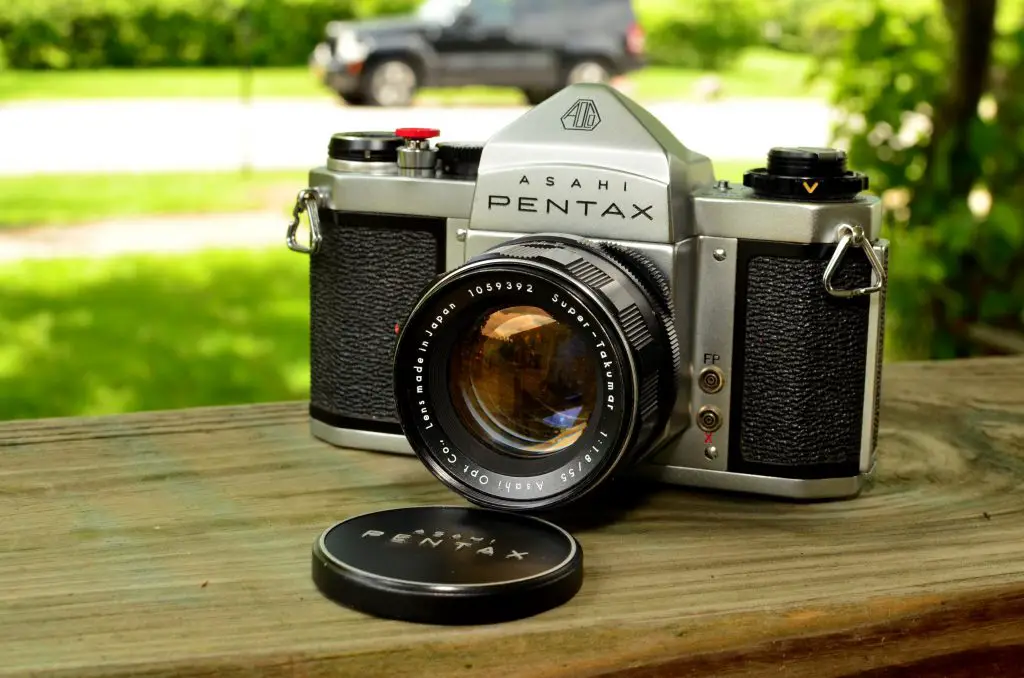 Film Type: 135 (35mm)
Film Type: 135 (35mm)
Lens Mount: M42 Screw Mount
Lenses: 55mm f/1.8 Super Takumar
Focus: Fixed SLR Prism
Shutter: Focal Plane Cloth
Speeds: T, B, 1 – 1/1000 seconds
Exposure Meter: None
Battery: None
Flash Mount: PC M and X-Sync
Weight: 826 grams (w/ lens), 612 grams (body only)
Manual: http://www.cameramanuals.org/pentax_pdf/pentax_sv_s1a.pdf
How these ratings work |
The Asahi Pentax Sv was a camera that immediately impressed me the first time I held it. In the time I’ve owned it, it has consistently delivered flawless performance and exceptional images. The camera has a timeless design that does not suggest it’s age. The lightweight body, excellent ergonomics, and handsome looks make this one of my all time favorite cameras of any design, from any era. Although I have acquired many other SLRs with arguably more advanced or capable features since this Sv, I still come back to it as it has become one of my all time favorite vintage cameras. While I assume that all S-series Pentaxes are as good as the Sv, this is the only one I have, so it’s the one that gets my praise. If you have an opportunity to pick one of these up good working order, do not hesitate as I am sure you will be as pleased with it as I have been. | ||||||
| Images | Handling | Features | Viewfinder | Feel & Beauty | History | Age | |
| 2 | 2 | 1 | 1 | 2 | 1 | 20% | |
| Bonus | +1 for overall excellence and nearly flawless performance every time I’ve used it | ||||||
| Final Score | 11.8 | ||||||
History:
The company name Pentax still exists today as a brand of reputable digital SLRs owned by the Ricoh company. Pentax was sold by it’s parent company Hoya to Ricoh in 2011, but prior to that was known as the Asahi Optical Company (Asahi Kōgaku Kōgyō K.K. in Japanese), based out of Tokyo. This version of Pentax traces it’s roots back to 1919 when it was originally formed as Asahi Kōgaku Kōgyō G.K., an optics company who made glasses and lenses for other companies.
During the 1930s through the end of World War II, Asahi was the primary supplier of lenses for a company called Molta who would eventually become the Minolta company. Asahi’s reputation as an optics company kept them busy making lenses for a variety of other people, but it was not until 1951 that they would make their first camera.
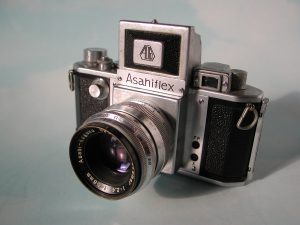
This camera was called the Asahiflex, and it made it’s debut in 1952 as the very first 35mm Japanese SLR. It’s design mimicked the top plate of the German Leica III (specifically the rewind and advance knobs) and body design of the Praktiflex SLR.
The Asahiflex was an interesting camera as it contained both a non-removable waist level viewfinder along with an eye level viewfinder on the body of the camera. This second viewfinder was fixed at 50mm and allowed the photographer to frame their image without it being reversed as was the case of all waist level viewfinders. In the image to the left, you can see this second viewfinder to the right of the ‘Asahiflex’ logo.
The Asahiflex had a modern (for the time) feature where the reflex mirror was coupled to the shutter release. When the photographer would press the shutter release, the mirror would flip up and remain in the up position for as long as the shutter release was held down. Upon releasing the shutter release, the mirror would return to the down position. This quick, but not instant return mirror was pretty significant for the time as most SLRs of the era had a mirror that would only return to it’s position when the shutter was cocked. Two years later in 1954, the Asahiflex IIb was released which had a true instant-return mirror where the mirror would return to the down position immediately after the shutter closed, regardless if the photographer was still holding down the shutter release.
Although the Asahiflex was exclusively marketed in Japan, there were some export models sold in the United States by the Sears Roebuck Co, under the names Tower Model 23 and Tower Model 24.
By the mid 1950s, more and more German SLRs featured a pentaprism viewfinder which did not invert the image like on a waist level viewfinder. This caused fixed waist level SLRs like the Asahiflex to fall out of favor with the public. The first German SLR with this feature was the Contax S released by Zeiss-Ikon in 1949, but prototypes existed from before the war.
In 1957, Asahi Optical released their first pentaprism SLR which they called the Asahi Pentax. Ironically, Zeiss-Ikon owned a trademark on the name ‘Pentax’ which was an amalgam of PENTAprism and ConTAX although they never used this name in any marketing materials. Asahi acquired the rights to the name Pentax prior to releasing their new camera.
Although Asahi beat both Nikon and Canon to the market with their pentaprism SLR by 2 years, they were not the first Japanese camera company to release a pentaprism SLR. This honor went to Orion Seiki Sangyō Y.K. with their Orion T, later known as the Miranda, which debuted in 1955. Since Miranda no longer exists today, this makes Pentax the longest running brand of Japanese SLRs still in production.
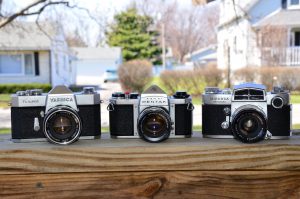
When the Asahi Pentax was released, it wasn’t a revolutionary design compared to German SLRs of the era, but it did refine the design into a more compact body that was affordable and easy to use making it immediately popular all over the world. It also retained the same M42 screw-type lens mount used by the original Asahiflex and many popular German companies of the era, which instantly gave the Pentax a wide selection of lenses to choose from.
Here are some of the highlights of the original Asahi Pentax design which were either firsts in the industry, or just really uncommon.
- The camera weighed around 590 grams which was about 250-300 grams lighter than other SLRs of the era.
- A rapid wind lever as opposed to a knob like on other SLRs.
- Fold out film rewind crank for rewinding the film back into the canister.
- A micro-prism focusing aid on the ground glass which was unique to Pentax.
In addition to these conveniences, the locations of many of the controls on the original Asahi Pentax were so popular that they set the standard for control layout of SLRs for decades to come.
Over the next few years, Asahi would make incremental revisions to the Pentax continually improving it along the way. The first two revisions to the original Asahi Pentax were called the Pentax S and Pentax K. After that, all future revisions of the Pentax had an “S” in the model name, nicknaming the entire series of Pentax cameras as the Pentax “S-series”.
In 1959, models built for US export were sold by the Heiland division of the Honeywell Company. These cameras were sold with Heiland Pentax name plates, but otherwise were identical in every way to their Japanese counterparts. The very next year, Honeywell dropped the Heiland name and sold the cameras with the name Honeywell Pentax. Model numbers of the Honeywell Pentaxes were usually the same as the Japanese versions, except they would replace the “S” in the model name with an “H”.
In 1961 Pentax started complementing the S-series with concurrently sold economy and premium models. The biggest differences between the economy and premium models were that the economy models usually had a top shutter speed of 1/500 sec compared to 1/1000 sec, and the included lens was a f/2 Super Takumar 55mm lens as opposed to a f/1.8 55mm in the premium model.
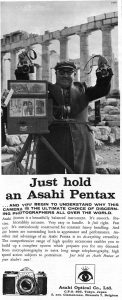
The camera in my collection is the Asahi Pentax Sv which is the 6th revision in the S-series line. It was introduced in 1962 (at least one source says 1963, but I believe 1962 to be accurate) and was in production until 1968. A slight revision to the mirror design was made in 1964 allowing the mirror to clear a new f/1.4 lens. The revised Sv models can be differentiated from the original design by the inclusion of an orange/red R on the rewind knob. Since my example has this R, this tells me that mine is at least from 1964.
The Sv was a premium Pentax with a max shutter speed of 1/1000 sec and for the first time on a Pentax, included a coupled self-timer allowing the photographer to set the camera and have the shutter fire approximately 10 seconds later. The self-timer on the Sv was unique in that it was a black metal dial under the rewind knob. The Sv also had a newly designed automatic film counter that would reset to 0 when the film door was opened.
In 1964, Pentax would release a new camera series that featured an electronic light meter called the Spotmatic. The Pentax Spotmatic series look very similar to the S-series, although if you look closely there are many physical differences.
When the Sv and it’s economy variant the S1a were discontinued in 1968, they were the last of the all manual Pentax SLRs. Total combined sales for the Sv and it’s export twin the H3v was over 481,000 units making it the most successful of the entire line of S-series cameras.
Today, Pentax S-series cameras are still very popular for vintage film collectors and photographers. Their small size, reliable reputation, huge variety of M42 lenses, and attractive and timeless design make them very appealing to anyone who appreciates old film cameras.
Over 1.2 million S-series cameras were sold over their 13 year production run, and the Spotmatic series that followed sold extremely well too, which means that there is a huge supply of them still available on the used market. Since there are so many out there, potential buyers can afford to pick and choose only the best models. Like any vintage camera, S-series cameras are still prone to the same ailments as other old cameras, but the large supply makes finding a good working example relatively easy.
My Thoughts
Collecting old cameras is probably very similar to collecting anything else, in that your collection tends to evolve. When I started acquiring old cameras, did I ever ask myself “do I need an Asahi Pentax Sv”? No.
My first film SLRs were Nikon and Canon models from the late 1970s to early 80s. I liked them because they were similar to DSLRs which I had become used to. SLRs from this era were already compact and easy to hold. As my collection started including older models, I noticed that the physical size of the cameras seemed to grow. SLRs from the 60s and early part of the 1970s were quite a bit larger than the later models, and while I wouldn’t say they were hard to handle, I definitely appreciated the smaller models and found that I was more tolerant of them hanging off my neck.
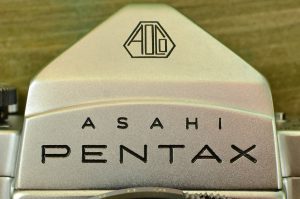
When I saw the first Pentax S-series, I didn’t realize how old it was. The design of the S-series is timeless. As I mentioned earlier in this article, the layout of the camera and the positioning of the controls was so well thought out that it influenced SLR design for decades to come.
The S-series predates all camera electronics and light meters. Asahi didn’t need to make room for a battery compartment or wiring for a light meter, and the associated needles and other parts to make such systems work. This means shooting with an S-series is a 100% manual process since the camera does nothing for you. While some might see this as a con, I think it is a blessing. It is this simple design that makes the S-series so reliable. Most meters in cameras from the 60s either don’t work, or aren’t accurate, so shooting with them is like having no light meter at all.
I mentioned earlier that the control layout of the Sv set the standard for years to come. The fold out rewind knob is basically identical to every SLR made until the mid 1980s, and the speed selector is also where you would expect to see it on a 30 year younger camera. Speaking of the speed selector, you’ll notice that this camera has a T and a B mode. For those of you who may have never heard of “T” mode, it is like “B” or “Bulb” mode in that it allows you to leave the shutter open for an indefinite amount of time, but unlike “B” mode where the shutter button must remain pressed for the duration of the shot, with “T” mode, one press of the shutter button opens the shutter, then you can let the button go and the shutter will stay open until you press the button a second time. This is really great for extended exposures if you do not have a shutter release cable. This is the only SLR I have with a “T” mode, and for me to find another model with this feature, I have to go back to my AGFA/Ansco B2 Commander or my Mercury II, both of which are from the 1940s.
Having a cleanly designed and simple camera with nothing extra means there is nothing that gets in your way. The camera is extremely comfortable to hold and is light enough that having it hanging around your neck all day is not a chore. I looked up the weight of my Nikon D7000 DSLR and without the lens, it is 780 grams. That’s almost 200 grams heavier than the all-metal Pentax Sv which doesn’t have a single piece of plastic anywhere on it.
The first time I handled my Sv, everything felt so natural that it felt like I had used one before. I was extremely excited to use it. The Super Takumar 55mm lens has an excellent reputation for sharpness and since everything seemed to be in good working order when I received it, I put in a roll of Fuji 200 and went out shooting.
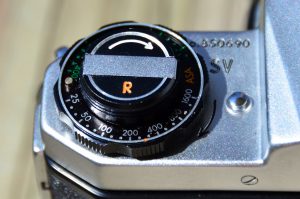
My Results
I think it is a compliment to the Sv that I don’t really have a lot to say here. And that’s not a bad thing. The Asahi Pentax Sv is a really well designed camera. My particular camera is serial number 850960. The Pentax Sv received one minor update in 1964 allowing for a new Super Takumar f/1.4 lens which slightly protruded into the mirror box. The revised Sv can be easily identified with an orange (some people say it is red) “R” on the rewind knob. The earlier design had a green “R” in the same location. According to this database, mine is the earliest reported serial number with the orange “R”. Whoever has serial number 829894 has the green “R”. Using this information, I conclude that I have a very early example of the revised design which means mine was probably built in the later part of 1964.
So if mine was made in 1964, it means this camera is 51 years old. Not only does that make it the oldest SLR in my collection (as of this writing), it’s also in nearly the best condition. I have to go to my 1977 Minolta XG7 to come to another one of my cameras in as pristine of shape. I really believe that whoever owned this camera originally did not use it very much. It probably sat on a shelf, unused for years. I find that to be both sad and great at the same time. Sad that such a wonderful camera was barely used, but great for me because now I get to use it!
Update 5/4/2015
I don’t know if this happened after my first roll, or if I just never noticed, but the frame counter on my Sv was not working. It is stuck at frame 20, and will not advance beyond that number, nor will it reset when I open the film door. When I advance the film to the next frame, I can see the dial try to move to the 21 position, but it always falls back to 20 and never goes any farther.
I’ve tried using a small flat head screwdriver and trying to peel away some of the light seal material around the reset pin in the upper door channel, but that does not appear to be a problem. It feels as though the reset pin is working correctly.
I’ve done a bit of research online and this does not appear to be a common problem, but from some advice on a Pentax forum, suggests I might have to take the top plate off, which I don’t want to do since the rest of the camera works so well. Most likely I’ll just leave it be, and continue to use the camera without a working frame counter. Disappointing, but hardly a deal breaker for what is otherwise an excellent camera!
Update 5/19/2015
I noticed there were 3 very small screws around the perimeter of the black disc that covers the film counter, so on a whim, I unscrewed them and took the black cover off to reveal the whole film counter, and I could clearly see that it was loose in there wobbling around. There was a large reverse thread screw that held it into position.
Before screwing it back down, I wanted to make sure it was in the correct position and I noticed a small key hole in the film counter that needs to be aligned with a pin on the metal gear beneath the film counter. I opened the rear door to reset it to the large dot before 0, lined up the key hole to the pin, and then screwed the reverse thread screw until it was tight. I replaced the black cover and tested operation of the counter and it works! The camera now properly counts frames and resets when I open the door! Hooray for simple fixes! My Sv is now in perfect working order again!
I loaded my first roll of film near the end of winter, so I didn’t get as many opportunities for nice outdoor shots, so I took some chances indoors in low light. Three of the six pictures below were taken indoors, hand held, with no flash. I was very pleased with the sharpness, depth of field, and color reproduction of the Super Takumar lens. It certainly delivered on it’s promise of clarity, sharpness, and accuracy.
The one bit of bad news that I encountered while shooting with my Sv was that somehow, the film inside of the 35mm cassette broke free from the spool causing it to spin freely on the take-up spool. This made it impossible to properly rewind the film at the end of the roll. Thankfully, I didn’t foolishly pop open the film door to discover this, and ended up having to create a make-shift dark room using my backpack and a completely dark living room to get the film out. I had a reusable 35mm cassette from my FED 2, and I was able to cut the broken film to a nice edge, then manually feed the film into the cassette. I wasn’t sure how much I should trust the light seals on the 50 year old film cassette, so while still in my backpack, I rolled it all up in aluminum foil and sent it off to the lab.
I was very pleased that most of my shots were saved. Of the 18 or so from the 24 that came back, the 6 above were my favorites. I honestly can’t even remember which shots I lost, but that’s OK. This was just my test roll. Hopefully this was a one time glitch from a defective roll of film and not a sign of bad luck with this camera. After getting the film out, I dry fired the camera several dozen times and inspected the film chamber and could not find anything to be out of sorts, so I honestly don’t expect this to happen again. If it does, I’ll be sure to update this review.
Update 8/13/2015
I loaded a roll of AGFA 200 speed film and took it with me downtown Chicago to visit Millenium Park and Lincoln Park Zoo for my son’s birthday and this time had much better success than my first roll. The Pentax Sv is an incredibly easy camera to use outdoors despite not having any sort of meter. As I usually do, I used Sunny 16 for all of these shots and not a single one of them came back poorly exposed. I have since received several other Super Takumar lenses for this camera and look forward to shooting with those. Simply put, this Sv is turning into my favorite film SLR in my collection.
So, there you have it! The Asahi Pentax Sv is a stunning example of 1960s Japanese camera design. It is smaller than other SLRs of it’s era, it fits comfortably in your hand, all of the controls are nicely laid out and exactly where you expect them to be, and the Super Takumar 55mm f/1.8 delivered on it’s promise for sharp, and accurate colors.
I mentioned above that a collection of old cameras evolves and grows. While this is exciting, it’s also sad in a way, because you start to get attached to some of these cameras and enjoy shooting with them. The more cameras I grow attached to, the harder it is to select one to go shooting. I have old cameras in my collection that are just as small and comfortable as this, and they also have lenses that are just as, if not better than the Super Takumar, and those cameras do have auto exposure modes assuring that every picture will come out properly exposed. But I think I’ll still shoot with this Sv more than those. For me, there’s something primal and raw about a camera that allows….actually, requires you to do everything for yourself. If it hasn’t already become obvious in this review, I really like this camera, and am sure that you too, would love one in your collection!
Additional Resources:
http://www.pentax-slr.com/71760545
http://www.taunusreiter.de/Cameras/Pentax_K_engl.html
http://www.pacificridgephotography.com/Photography/Gear/Asahi-Pentax-SH-Series/
http://camerapedia.wikia.com/wiki/Pentax_%28original%29
http://camera-wiki.org/wiki/Pentax_(original)
http://photo.net/classic-cameras-forum/00Wvft
http://www.shutterbug.com/content/classic-camerasbrjust-hold-pentax

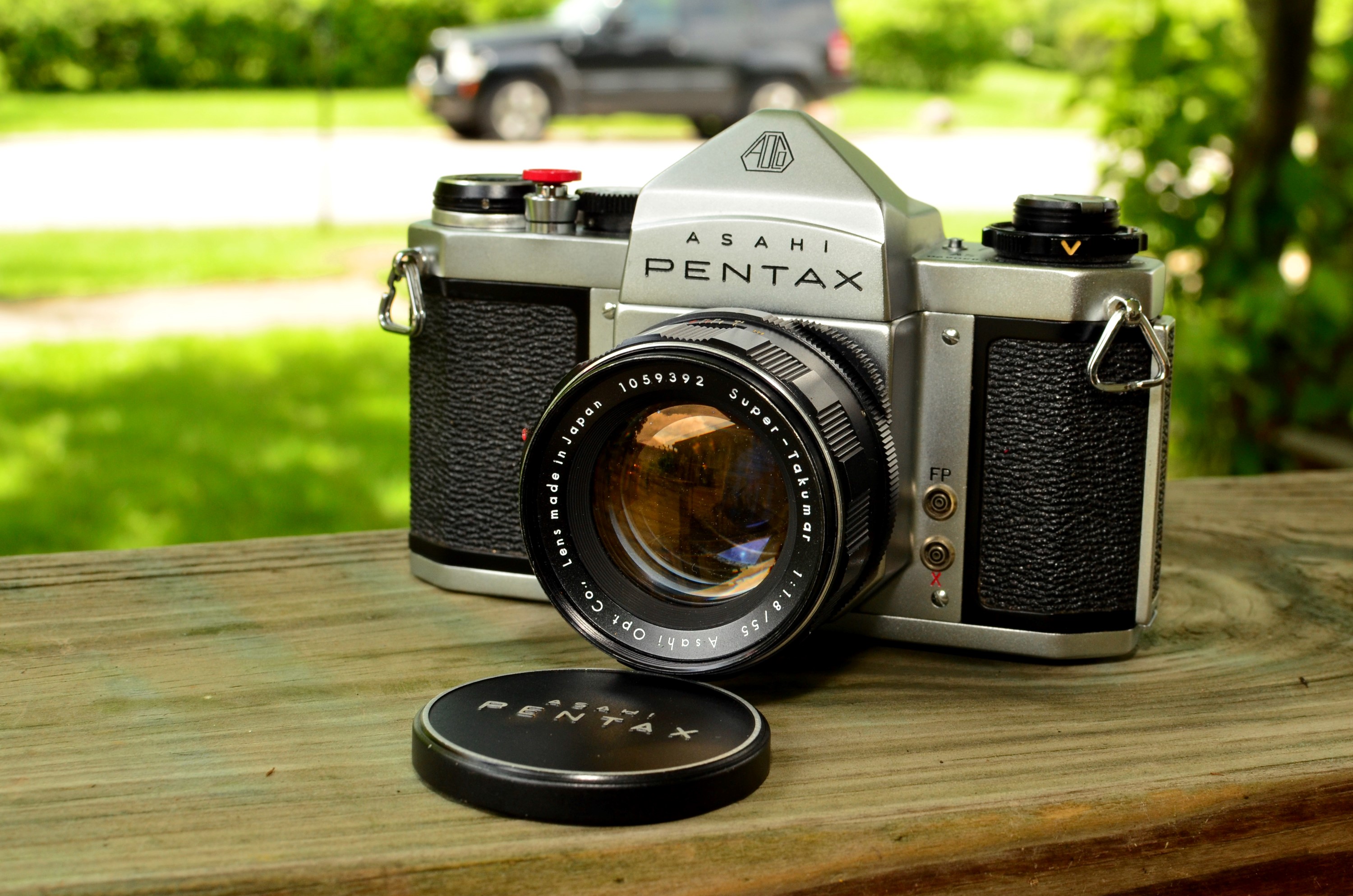
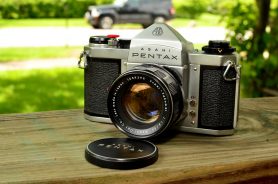












Wondering is a Pentax K cameras worth anything now? And it’s not the k1000
The Pentax K-series are still pretty popular. The K1000 you mentioned is without a doubt the champion of basic manual focus cameras, but other models in the K-series like the K-X and K-M which have features like a self-timer and depth of field preview that the K1000 lacks. As with most cameras, condition means a lot, but since there are so many K-series cameras still out there in good condition, they dont have a huge value. In mint condition, a K-X would sell for around $50 body only, but if its on rough shape, the value is pretty low. These aren’t common cameras, but that doesn’t mean they’re not excellent performers.
I wonder if Juan is actually referring to the first model “Pentax K” from the S series itself (also known as one of the Tower models but I forget its designation)…. If so, then YES, it is worth quite a lot, usually regardless of condition.
Nice review and a great set of results. I’ve just bought an SV – I hope I get such good results!
Nice review – Many Thanks – I have one SV and two S1a – And many Takumar and Super Takumars – My first S1a was purchased by my mother 1973 as a birthday present. It was new, so must have been in the camera shop for many years! I’ve used Pentax film all my life! Truly underrated cameras.
Thanks for the compliments Ian. I have many M42 and K-mount Pentax cameras, and the Sv is still my favorite! I bought a whole family of screw mount lenses just to use them on this camera!
A very well written article! Thank you for the history lesson and especially your thoughts on Asahi SV. My first slr was a Mamiya Sekor 1000DTL. The camera is long gone but the M42 lenses collected during its use are still sitting in my camera bag.
Using them with a Pentax P30T with a lens adapter and now, I just purchased a SV through a popular auction site. So as I tell my wife: the collection is complete!
Great write up indeed. I’ve shot Pentax for years now and owned numerous K and M line models, as well as several newer and DSLRs as well. Never delved into the S series though I’d heard their merits many times over. Picked on up on a whim for cheap last week and in a short amount of time it has become a favorite, up there with my LX and MX bodies…. easily so. Difficult to describe what it is about this timeless machine. As someone I was talking to about it recently stated… shooting an SV is just sublime. I agree. Wish I’d arrived sooner. 🙂
Although I love my D700, I have just bought a second SV to match my Spotmatic 1000, and S1a that I’ve used since the 70s. Endorse all your comments. Picked up a Leidolf Lordomat recently and agree with all your notes on that post. Vinyl returning, analogue (as we are now to say) cameras, steam locos at 100mph; they’ll be inventing centrally controlled vehicles on a planned linked matched trajectory timetable – a Victorian idea, they called them trains!
My Pentax SV is serial no. 828222 and has a red R.
Thanks for the review. I bought an SV with the 55mm lens and I have to say I was blown away by the simple quality of the camera and of the images from my first roll of black and white film. Small camera, small lenses, great shots.
THX!!! Am going for my first SV, — pumped!
I received one of these for Christmas in 1977 or 1978. My father bought it at a pawn shop. I just recently pulled it out of a box and took it to a repair shop for a thorough cleaning to bring it back to life. Absolutely loved that camera…except the hassle of having to check a light meter constantly. Excited to get it back to working order!
Thanks for the post…
I actually went to your site in hopes of discovering if I could find and purchase the light meter that fits on the top of the camera. It is mounted on the view finder in the rear and has a pin that fits in the slot on the f stop. I purchased my camera in 1964 while stationed in France through the Army Post Office. I paid no taxes and purchased it for $85.00. I later purchased a 35mm fish eye and a 150mm lens. The camera was recommended to me by the dentist that I was assisting, Maj. Billie B. Lefler. Maj Lefler retired in 1990 with the rank of Maj/Gen. and was the head of the Dental Corps. When he was stationed at Walter Reed Hospital, one of his patients was Mamie Eisenhower among other notable government officials. I wrote a memorial to him on his Facebook page if you are interested. He was the best dentist that I have ever assisted. or for whom I have made dental appliances.
Found one. Made a mistake. The pin goes into the slot of the speed dial or indicator. Purchased it for $61.00 on e-bay. It was used of course and in pretty good condition. The seller was from Japan and it was his last one. There is another used one on site for $31.00, but was not is as good a shape. Looked like it needed some cleaning up on the inside. The one that came with the camera broke. The tape that has the f stops on it came loose. Like you I would guess at the f stop with good success. Much rather know for sure.
Glad you found one as I was going to recommend eBay. I actually do have one of these meters that I picked up long ago, but it does not work. I just like it for display. I take it off when I want to shoot the camera as I do almost all my shooting using Sunny 16.
On a very recent trip to Tasmania, Australia, i found an ‘as new’ Pentax SV in an antique shop in Richmond. It’s so new looking it doesn’t look like it has ever had a film through it. The owner was asking AUD$180 (and with a brand new looking 55mm pentax lens on it too!) which i was happy to pay. You’ve inspired me to put a roll through it. It will live in my collection with a Canon AE1, Pentax K1000 and a couple of others. Thanks very much!!!
That is fantastic that you were able to find such a nice Pentax Sv! Despite having written this review several years ago, this is still one of my favorite cameras. What a lucky find!
You got a real good deal.
At the time that I purchased my Petax SV, the Honeywell was selling in the States for about $350.00. In the PX around $150.00. I purchased mine, because I was stationed in France, directly from Japan through the Army Post Office for $85.00 because I did not have to pay any taxes. This was in 1964.
Great review (as always, detailed and full of useful info). I just bought an SV, serial number 975xxx, for all of $17.00 (plus $15 shipping). I also bought the 55mm 1.8 SMC Takumar lens for another $40. Other than a tiny dent in the prism housing, it looks beautiful. I sent it off to Eric Hendrickson for a CLA and received it back the other day. It’s my first Pentax and I can’t wait to use it.
Early Pentax’ without Heiland or Honeywell could have filtrated down from Canada where Honeywell did not distribute them.
I also have a Pentax SV with a red/orange R on the rewind. Serial no 818307. Does anyone have an earlier one?
Excellent article. I have one of each. The green rewind letter is no. 768905, and the later red letter is 812208.